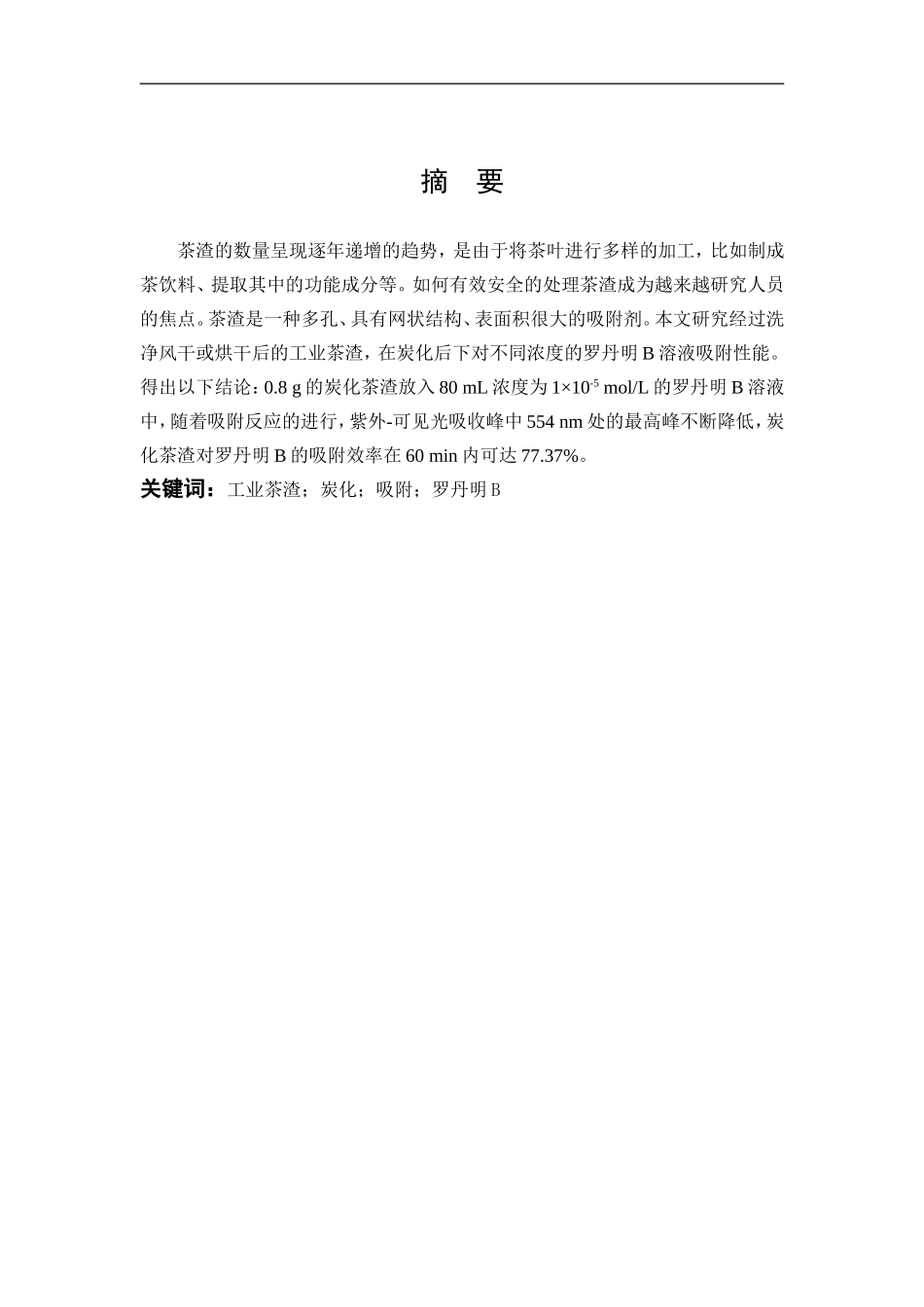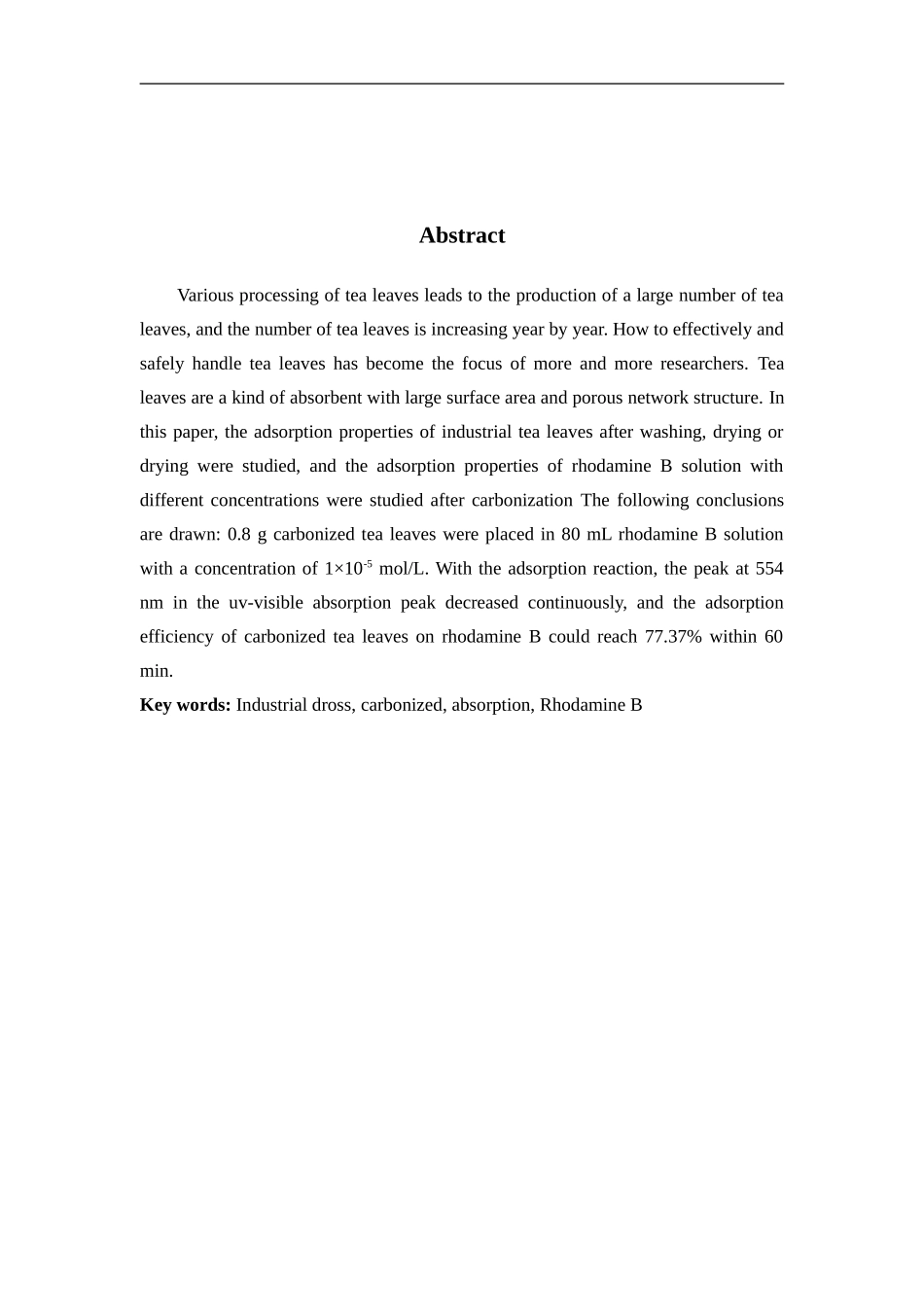摘 要茶渣的数量呈现逐年递增的趋势,是由于将茶叶进行多样的加工,比如制成茶饮料、提取其中的功能成分等。如何有效安全的处理茶渣成为越来越研究人员的焦点。茶渣是一种多孔、具有网状结构、表面积很大的吸附剂。本文研究经过洗净风干或烘干后的工业茶渣,在炭化后下对不同浓度的罗丹明 B 溶液吸附性能。得出以下结论:0.8 g 的炭化茶渣放入 80 mL 浓度为 1×10-5 mol/L 的罗丹明 B 溶液中,随着吸附反应的进行,紫外-可见光吸收峰中 554 nm 处的最高峰不断降低,炭化茶渣对罗丹明 B 的吸附效率在 60 min 内可达 77.37%。关键词:工业茶渣;炭化;吸附;罗丹明 BAbstractVarious processing of tea leaves leads to the production of a large number of tea leaves, and the number of tea leaves is increasing year by year. How to effectively and safely handle tea leaves has become the focus of more and more researchers. Tea leaves are a kind of absorbent with large surface area and porous network structure. In this paper, the adsorption properties of industrial tea leaves after washing, drying or drying were studied, and the adsorption properties of rhodamine B solution with different concentrations were studied after carbonization The following conclusions are drawn: 0.8 g carbonized tea leaves were placed in 80 mL rhodamine B solution with a concentration of 1×10-5 mol/L. With the adsorption reaction, the peak at 554 nm in the uv-visible absorption peak decreased continuously, and the adsorption efficiency of carbonized tea leaves on rhodamine B could reach 77.37% within 60 min.Key words: Industrial dross, carbonized, absorption, Rhodamine B目 录1 引言.....................................................................................................................51.1 工业茶渣的来源...............................................................................................51.2 茶渣的利用..............................................












